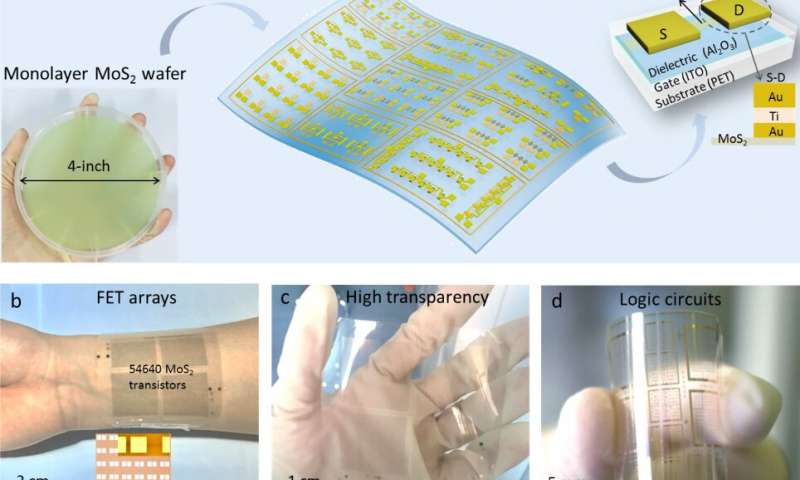HOME
Flexible and transparent electronics fabricated using a two-dimensional semiconductor

In recent years, engineers worldwide have been trying to create electronic components that are increasingly flexible and versatile, as this could enable the fabrication of more sophisticated devices and robotic systems, such as electronic skins (e-skins) or wearable sensors. The overall objective of this particular area of research is to develop flexible electronics that can be manufactured and implemented on a large scale, but that also exhibit a high device density and excellent performance.
A class of materials with particular promise for developing flexible electronic parts are two-dimensional (2-D) semiconductors, such as molybdenum disulfide (MoS2). While this material has many advantageous mechanical, optical and electronic properties, it has so far proved challenging to build large-scale, flexible integrated circuits with a high device density and high performance using MoS2.
Researchers at the Chinese Academy of Sciences have recently fabricated a new flexible and transparent MoS2-based transistor that could be manufactured on a large scale. This transistor, presented in a paper published in Nature Electronics, was created using a variant of the conventional vapor deposition process.
"Two-dimensional (2-D) materials such as molybdenum disulfide (MoS2) have the potential to be the new building blocks for flexible electronics owning to their naturally thinness and flexibility," Guangyu Zhang, one of the researchers who carried out the study, told TechXplore. "However, fabrication of large scale flexible electronic devices with high performance is still very challenging. In this work, we tried to develop prototypes of large scale flexible and transparent electronics, based on our recent progress in the wafer-scale epitaxy of high quality monolayer MoS2."
News Source